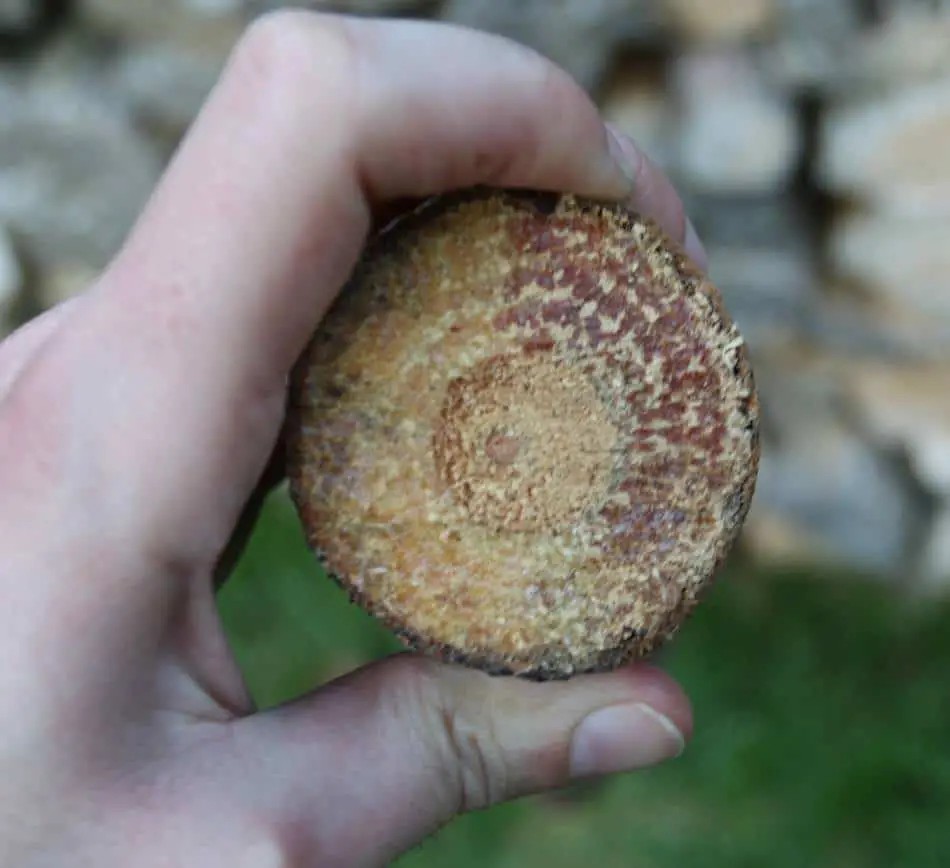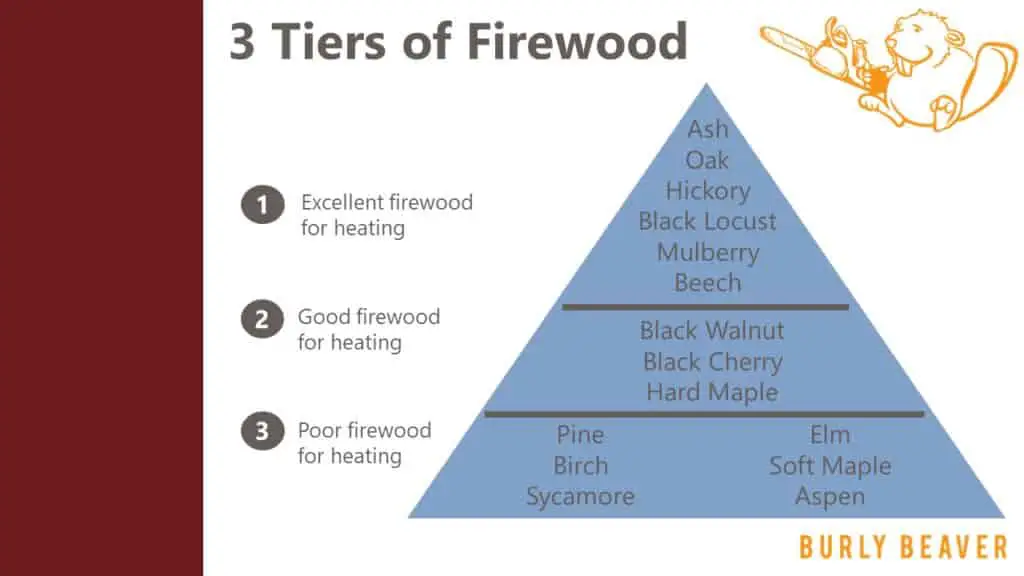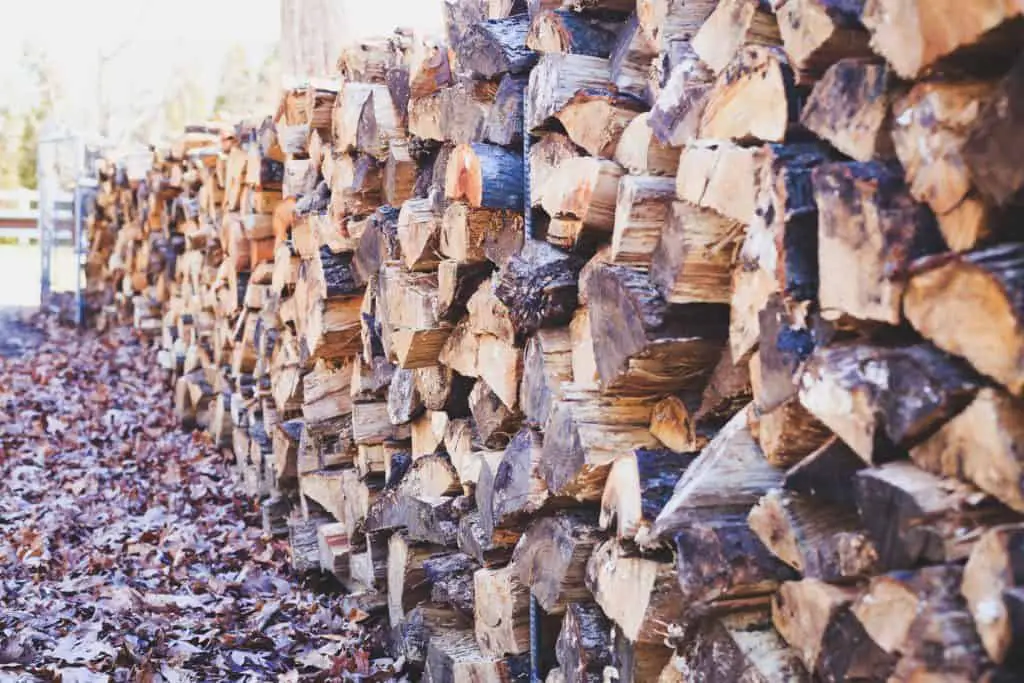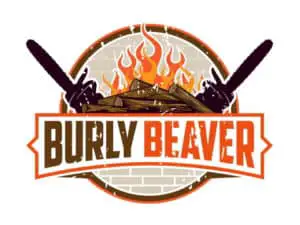
It can be hard to know what to do with Pine firewood. There are some situations where it works great, and other situations where you should completely avoid it. Let’s start with a short answer to the main question:
Does Pine make good firewood?
Pine is one of the best types of firewood for outdoor campfires, because it produces a pleasant fire that smells nice and doesn’t burn too long. However, Pine is not a good choice for heating with a wood stove or fireplace, because it has low heat output and contributes to creosote build-up.
That’s the quick answer, but it leaves important questions unanswered. Below, we’ll highlight the most important burning qualities of Pine, and compare it with several other common firewood types.
Pine vs. Other Firewood

Below you’ll find a graphic, which assigns Pine to one of three tiers of firewood quality. This will give you an easy view of where Pine stands in comparison to other types of wood in our area (the Midwest USA).
Within each tier, the types of firewood are not ranked but are considered close in performance. Also, you may like to know that the tiers are based primarily on data from several university extension offices.
To learn more about the data sources, you can read the note below the image. Now, here it is!

The information in this image is based largely off of data from the following sources: Utah State University Forestry Extension, Oklahoma Cooperative Extension Service, University of Illinois Extension, University of Missouri Extension, South Dakota State University Extension. In addition, where there was missing data (only a few occasions), I’ve used my own experience to round out the data.
In addition to heat output, these tiers take additional factors into consideration, including smoke output, quality of coals, and fragrance.
In the next section, we’ll dig into the 6 most important burn qualities, why they’re important, and how Pine performs in each category.
The 6 Burn Qualities of Pine

1. Heat Output vs Other Firewood
As mentioned in the introduction, Pine is NOT a good performer on heat output. You can see this really clearly by looking at the numbers.
Below, we’ve compiled heat output data (measured in million BTUs per cord of wood) for 15 of the most common types of firewood in our area. For this comparison, we’ve specifically used Southern Yellow Pine.
Southern Yellow Pine is on the higher end of the heat spectrum for Pine trees. Most types of Pine will produce even less heat than this, so keep that in mind when you see the table.
Pine is marked with bold text below. (Note: data sources are mentioned under the infographic above).
Heat Output of Common Firewood
| Species | BTUs | Weight/Cord (lbs) |
| Black Locust | 29.3 | 4192 |
| Hickory | 28.5 | 4072 |
| Beech | 27.5 | 3760 |
| Oak (White) | 26.4 | 3776 |
| Mulberry | 25.8 | 3712 |
| Ash | 24.2 | 3472 |
| Maple (Hard) | 23.9 | 3408 |
| Black Walnut | 22.2 | 3192 |
| Pine (Southern Yellow) | 22 | 2936 |
| Birch | 20.8 | 2992 |
| Sycamore | 24.1 | 2872 |
| Black Cherry | 20.4 | 2928 |
| Elm | 20 | 2872 |
| Maple (Soft) | 19 | 2752 |
| Aspen | 18.2 | 2160 |
Southern Yellow Pine is in the low-to-middle range.
However, if you consider the heat output of some other Pine species, like White Pine and Ponderosa Pine, the heat output is much closer to 16, which would put it at last place on this list.
Regardless of the type of Pine firewood that you’re using, you can expect it to be among the lowest options for heat output.
However, heat output isn’t everything. It’s definitely important, but it’s not the only thing that matters. There are a few other factors that will affect how good the wood is for heating or for outdoor campfires.
Next up, let’s look at smoke output.
2. Amount of Smoke
Pine is a heavy smoke producer, and you can expect it to create more smoke than nearly every other type of wood in our list.
The only other type of firewood that comes close on smoke production is Hard Maple, which is also known to produce a lot of smoke when it burns.
Smoke is an important thing to consider because it can be annoying at campfires. More importantly, heavy smoke can also contribute to creosote build-up in chimneys (see #6 below).
In addition to the type of wood you use, another thing that causes smoke is if the firewood is not fully dried. You should always plan to burn seasoned (not wet) firewood.
If you skip down to this section, you can learn more about seasoning firewood, and how you can accelerate the process.
3. Does it Spark?
Firewood sparks may initially seem like a minor factor, but it can actually be a major safety issue. Some types of wood pop really powerfully (like Catalpa wood) and could hurt somebody or even damage your stove.
Other types of firewood are less explosive but still spark significantly (like Mulberry). This can be an issue if you’re using an open-air fireplace, or if you’re burning outside and there are fire risks (like very dry conditions).
You obviously don’t want to catch a rug on fire (or worse!). So it’s important to monitor any type of fire that’s burning in open-air, and also to know the qualities of the firewood you are using.
Pine is actually fine here, and it doesn’t produce many sparks. Of course, you’ll still want to keep an eye on it if you’re burning an open-air fire, but that’s a normal precaution that you should take for any type of wood.
4. Smell or Fragrance
I’m sure this is no surprise to you, but Pine firewood smells amazing. Smell is one of the best qualities of Pine, and it even made our list of the 11 best smelling firewoods.
You may even have some Pine air fresheners in your car or home. Pine has a fresh and distinctive smell, and almost anyone can recognize it.
Pine’s smell is one of the reasons it makes such great firewood for campfires. Thinking about it makes me want to pack-up and go camping 🙂
5. Does it Produce Coals?
Another factor that is commonly used for rating firewood is “coaling”. When any kind of firewood burns it produces coals, and the quality of the coals produced has a big impact on how long (and how well) the fire will continue burning.
For example, wood that has great coaling properties will work well as an overnight fuel in wood stoves, because the quality coals will help the fire stay hot through the night.
These long-lasting coals can also help you to easily re-start a fire in the morning by simply adding more wood to the existing embers.
Pine produces terrible coals, the worst of any firewood on our list. This is bad if you’re trying to heat a buildling, but for a campfire, it’s actually okay because you don’t have to stay up late to make sure it goes out.
6. Creosote Build-Up
If you’re using a fireplace or wood stove in your home, another important thing to consider is the maintenance of your chimney, and specifically preventing creosote build-up.
If you’ve not heard of creosote before, it’s a side product of burning wood, and it’s basically a black tar that is gradually deposited by wood smoke on the inside walls of a chimney.
Creosote isn’t a problem in small quantities, but if it gets built up, it can be quite dangerous. Build-up of creosote can reduce the ventilation of your chimney, and it’s also HIGHLY flammable, which can cause chimney fires.
To prevent creosote build-up, it’s important to properly maintain your stove and to have your chimney cleaned regularly.
In addition, you should only burn wood that is thoroughly seasoned (dried), because wet wood produces more creosote. Another big factor is the type of wood you’re burning.
In general, firewood that is very sappy will produce much more creosote build-up than firewood that is not as sappy. And Pine is arguably THE sappiest type of wood.
As a result, Pine is probably the worst type of wood when it comes to creosote build-up. Many people, including my family, completely avoid burning Pine in wood stoves or fireplaces for this reason. It’s not worth it.
Burn Quality Overall Comparison

Alright, now that we’ve covered the 6 most important burning qualities for Pine, let’s boil it down to the biggest highlights.
- Pine has low heat output compared with other types of firewood in our area and is not a good choice for heating.
- Pine smells amazing which is one of it’s best qualities as firewood, and also makes it very nice for outdoor campfires.
- Pine produces low-quality coals which is bad for heating but can be nice for outdoor campfires because it doesn’t burn too long.
- Pine contributes to creosote build-up which can be dangerous, so you should avoid burning Pine in indoor wood stoves and fireplaces.
Next, we’ll briefly touch on identification for Pine firewood.
Identifying Pine Firewood

There is one easy way to identify Pine firewood: it’s sticky!
Yes, that’s right. Pine has sticky sap. You may have touched it and felt it before. All trees have sap, but most wood doesn’t have sap that’s thick and sticky like Pine.
In our area, if it sticks to your hand, then you know it’s Pine.
In addition to the sticky sap, Pine also tends to have a lot of branches and knots compared to other types of wood.
You may also be interested to know, that out of the 15 types of common firewoods we listed above, Pine is the only one that has needles instead of leaves.

Now for our final topic, seasoning your Pine firewood.
Seasoning Pine Firewood
In general, firewood will take at least 6-8 months to fully season and for some types of wood, this process can take even longer. You should expect it to take 6+ months to season Pine firewood.
For wood to be “seasoned” basically just means that it’s thoroughly dried, and you should always plan to burn firewood that is completely seasoned.

Exactly how long it will take depends on several factors, including the climate where you’re located (e.g. wood dries faster in Texas than in Oregon), and if you’ve properly split and stacked the wood.
In order to expedite the process, and to get your firewood seasoned as quickly as possible, use the following tips for fast drying:
5 Tips for Seasoning Firewood Fast
1. Split the firewood
firewood dries WAY faster when it is split into pieces, rather than sitting in log-form. Think about it, when the wood is split more surface area is exposed to the wind and sunshine, which are the primary contributors to dry wood.
2. Elevate the firewood
You may do a double take here, because a lot of people don’t do this step due to the extra effort required. And I’ll admit, this isn’t absolutely essential, but if you put your stack of firewood up on some pallets or perpendicular planks, it will increase airflow beneath the firewood stack and will accelerate your drying time.
3. Stack the firewood
To optimize your drying time, you should stack your firewood neatly in a location that will maximize the amount of sunshine and airflow. For example, stack the wood away from buildings (out of the shade), and point the face of the stack (not the ends) towards the direction from which you get the most breeze.
4. Leave space between rows
if you make multiple stacks of firewood, each stack should be separated by at least a few inches for airflow. This will allow both stacks of wood to dry better.
5. Cover (optional)
If your wood pile is outside you can put a cover or tarp over the stack to drain any rain/snow. Just make sure that it doesn’t totally block airflow from the side of the stack, otherwise it will trap in moisture and make seasoning take longer.
If you want to learn more about seasoning firewood, you should take a look at this article. And if you’re curious about whether you can stack and dry your firewood in your garage or shed, then you might want to check out this article.
Related Questions
What is the Best Firewood?
The best type of firewood for heating a home with a wood stove, is Black Locust or Hickory, due to the high heat output and long-lasting coals. For outdoor campfires, Pine or Cedar are better because they produce a pleasant fire that doesn’t burn too long.
Is Pine a Hardwood?
Pine is not a hardwood because it is not deciduous. Deciduous trees are those that lose their leaves every year. For a tree to be a hardwood is based on whether that tree is deciduous, not on the density of the wood. Pine is a conifer (a softwood), which are evergreen and have needles.
